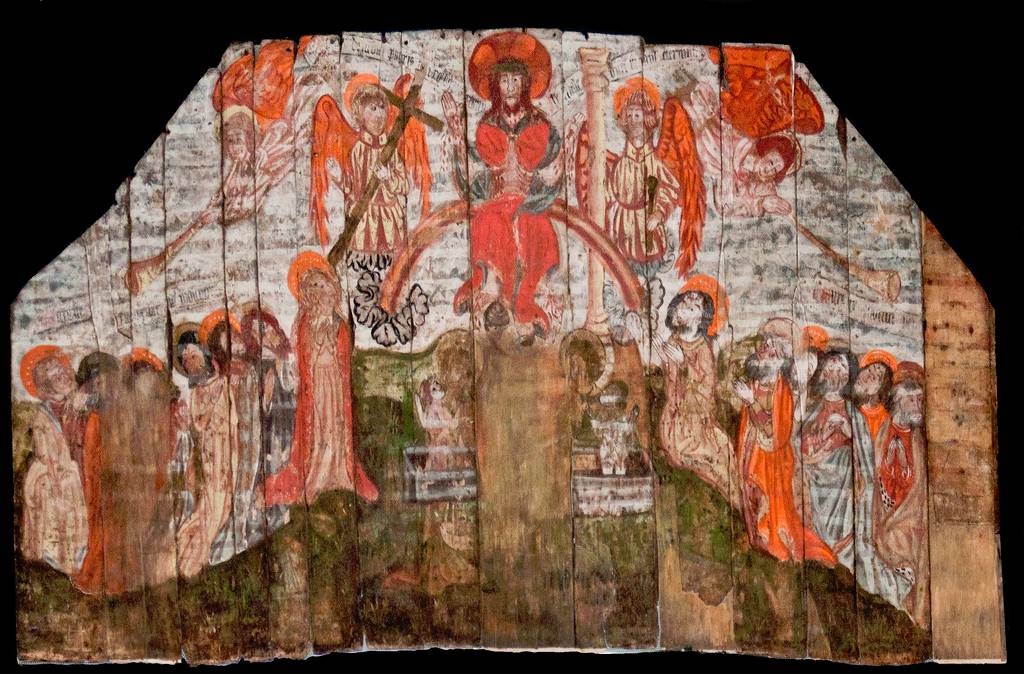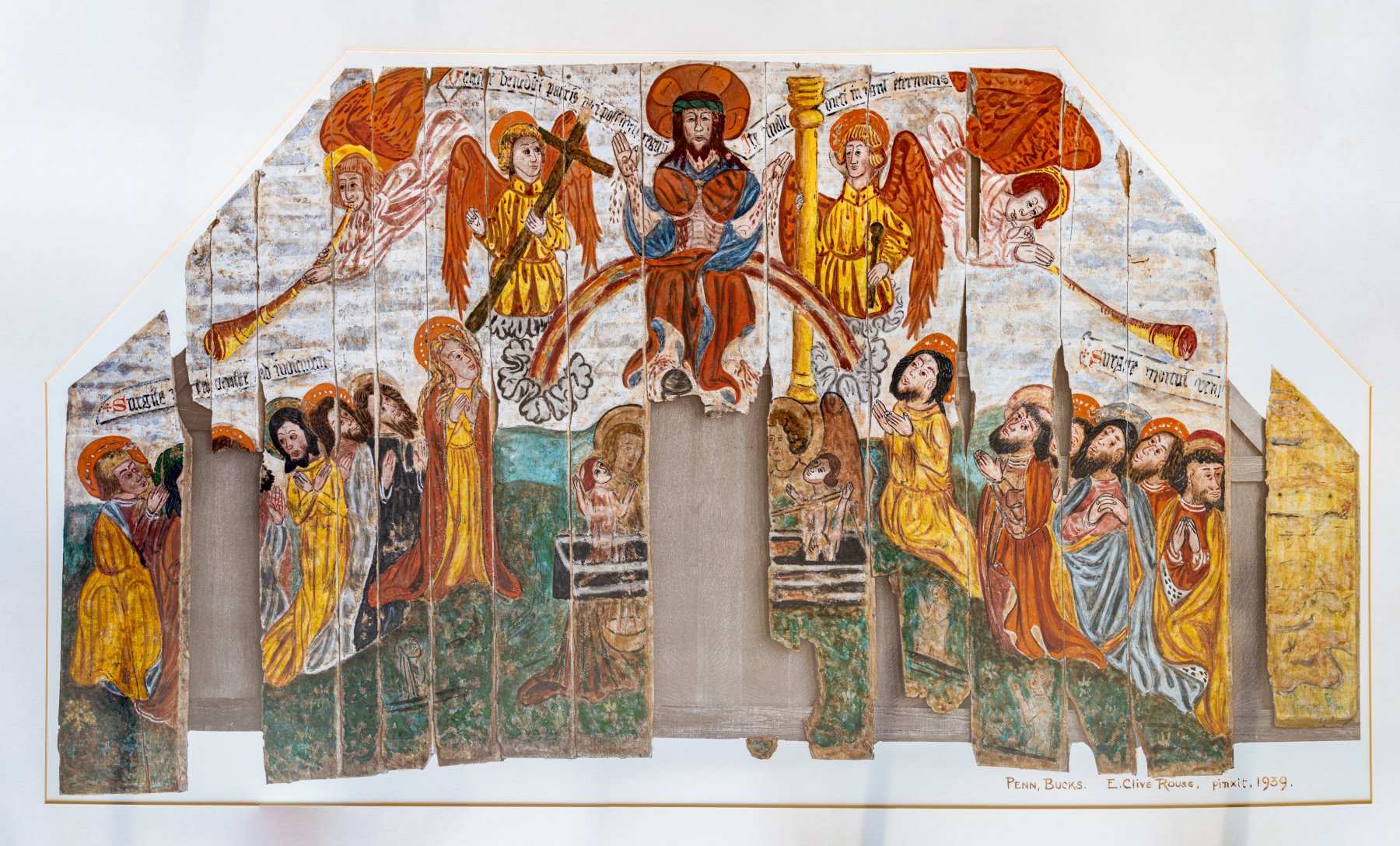The painting of the Doom, or Last Judgement, which hangs high above the chancel arch may not seem impressive at first sight, but it is a very rare survival from the Middle Ages. There are only five of its type in the country.
It has hung in our Church for 600 years and is all that is left to remind us of the colourful images that so impressed the largely illiterate worshippers in the Catholic Church that served our predecessors. All such evidence of popery was forbidden after the Anglican Church was established and the painting, which was then fitted under the chancel arch, was whitewashed over in about 1550. A further layer of the lath and plaster was added, probably when the chancel arch was rebuilt in 1733.

1938: The boards of the Penn Doom roughly
reassembled and freed of lath and plaster and
some whitewash, immediately after discovery,
but before cleaning.
It was only rediscovered in 1938, quite by chance and in its present position, when workmen were repairing the roof. They broke up what they thought was old lath and plaster and piled it in the churchyard to be carted away. Some was taken to the local rubbish tip. One of the workmen was about to take some home for firewood when he noticed a face painted on its surface. He called the Vicar who called Dr. Clive Rouse, a very considerable expert in such matters, who at once realised its importance and after two days combing through the rubbish tip, recovered and assembled as many of the pieces as he could find.
(An extended article on the Penn Doom, Records of Buckinghamshire, Vol 44, 2004)
The Penn-Pennsylvania Fellowship have recently paid for a survey by Ruth Bubb, an expert conservator, who has recommended that it should be taken down to be repaired, cleaned and treated for woodworm. This would also allow a close technical examination by experts using X-rays, infra red reflectography and pigment analysis. One particular area of interest is that an earlier painting, more delicate in tone and line, underlies the simpler, bolder design, which we can see.
The PCC have decided to accept Ruth Bubb’s advice, and the Diocesan Advisory Committee has given their agreement. Application will be made to various grant-making bodies.
Extended Penn Doom article, Records of Bucks, 2004
© Miles Green, February 2000.
Photograph courtesy Eddie Morton, ARPS


